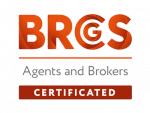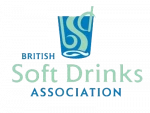Rethinking New Product Development in the Food Industry

Recent Posts
Categories
The food industry is undergoing rapid transformation. Consumers are demanding healthier, more sustainable options. Regulations are tightening. Costs are rising. And supply chains are being tested like never before.
In this environment, innovation isn’t optional—it’s essential. That’s where New Product Development (NPD) comes in. It’s not just about launching new products. It’s about evolving existing ones, responding to market shifts, and creating food that meets real-world needs.
What Is New Product Development?
New Product Development is the structured process that turns ideas into market-ready food products. It’s not guesswork—it’s a strategic, step-by-step approach that blends creativity with commercial insight.
NPD doesn’t always mean starting from scratch. It often involves refining what already exists—enhancing nutritional value, updating ingredients, or improving shelf appeal. The goal is to create food that’s not only innovative but also viable, scalable, and aligned with consumer expectations.
Why a Clear NPD Process Matters
Without a clear process, even the best ideas can stall. They may fail to meet regulatory standards, exceed cost targets, or simply miss the mark with consumers.
A strong NPD framework helps teams:
- Move faster with fewer delays
- Reduce waste and rework
- Align product development with business goals
- Launch with confidence and clarity
What Makes a Great NPD Process?
It starts with purpose. Why are you developing this product? Is there a clear market demand? Are you solving a real problem?
From there, every step should add clarity:
- What’s in the product?
- Can it be produced at scale?
- Will it meet safety and labelling requirements?
- How will it be positioned in the market?
Key Questions to Ask Before You Begin
- Are we solving a real consumer need?
- Do we have the right skills and resources in place?
- Can we scale this product efficiently?
- What are the supply chain risks?
- Have we involved all relevant departments—technical, quality, marketing, and procurement?
- Will this product support our brand and sustainability goals?
Common Pitfalls—and How to Avoid Them
Most NPD failures aren’t due to bad ideas. They’re caused by poor planning, miscommunication, or skipping critical steps.
Watch out for:
- Ignoring consumer feedback
- Solving problems that don’t exist
- Rushing development without proper validation
- Leaving key teams out of the loop
A collaborative, well-structured process helps avoid these issues and keeps development on track.
Who Should Be Involved?
Successful NPD is a team effort. Key contributors typically include:
- Product Developers: Drive the process and manage timelines
- Technical Teams: Ensure safety, compliance, and feasibility
- Procurement: Source ingredients and manage supplier relationships
- Operations: Confirm scalability and production readiness
- Marketing: Shape the product’s positioning and gather market insights
Bringing these teams together early ensures a smoother, more efficient development process.
Choosing the Right NPD Partner
When internal resources are stretched, the right partner can make all the difference. A good NPD partner brings more than ingredients—they bring insight, agility, and practical support.
Look for a partner who:
- Has experience with similar projects
- Understands food safety and compliance
- Offers trend insights and technical expertise
- Communicates clearly and consistently
- Supports your team with training and collaboration
What Success Looks Like
Effective NPD delivers more than just a product—it builds capability. It creates systems that can be repeated, scaled, and adapted as the market evolves.
Whether you’re launching a new range or improving an existing one, success means:
- Meeting consumer needs
- Hitting commercial targets
- Reducing risk and delays
- Building a foundation for future innovation
Trends Shaping the Future of NPD
- Food Safety as a Strategic Priority
Safety and compliance are now central to brand trust and operational resilience. - Functional Foods on the Rise
Consumers are seeking added value—think immunity support, plant-based proteins, and personalised nutrition. - Innovation Under Pressure
Rising costs and tighter regulations are driving smarter, faster innovation—often supported by technology and data. - Cross-Functional Skill Building
NPD is no longer siloed. Teams across procurement, operations, and quality are being upskilled to support development. - Resilient Supply Chains
Businesses are stress-testing their sourcing strategies to ensure continuity and reduce risk.
Final Thoughts
New Product Development is more than a process—it’s a mindset. It’s about solving real problems, creating real value, and building food products that work in the real world.
Done well, NPD becomes a growth engine. It helps businesses stay relevant, resilient, and ready for what’s next.










